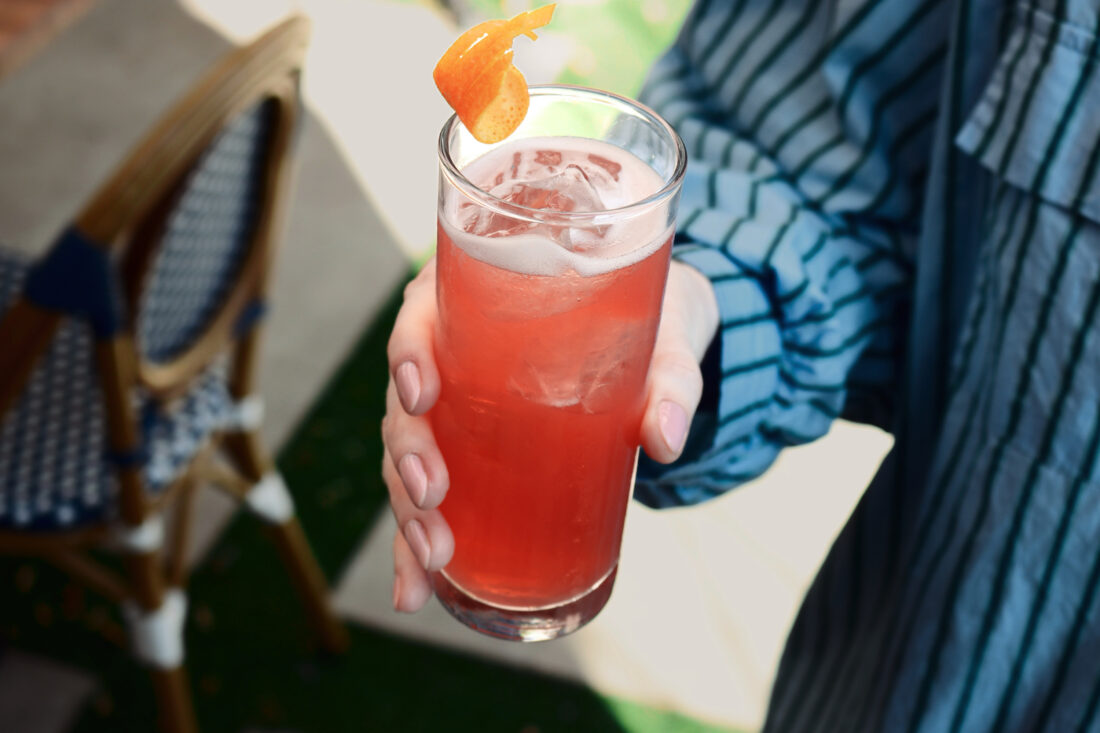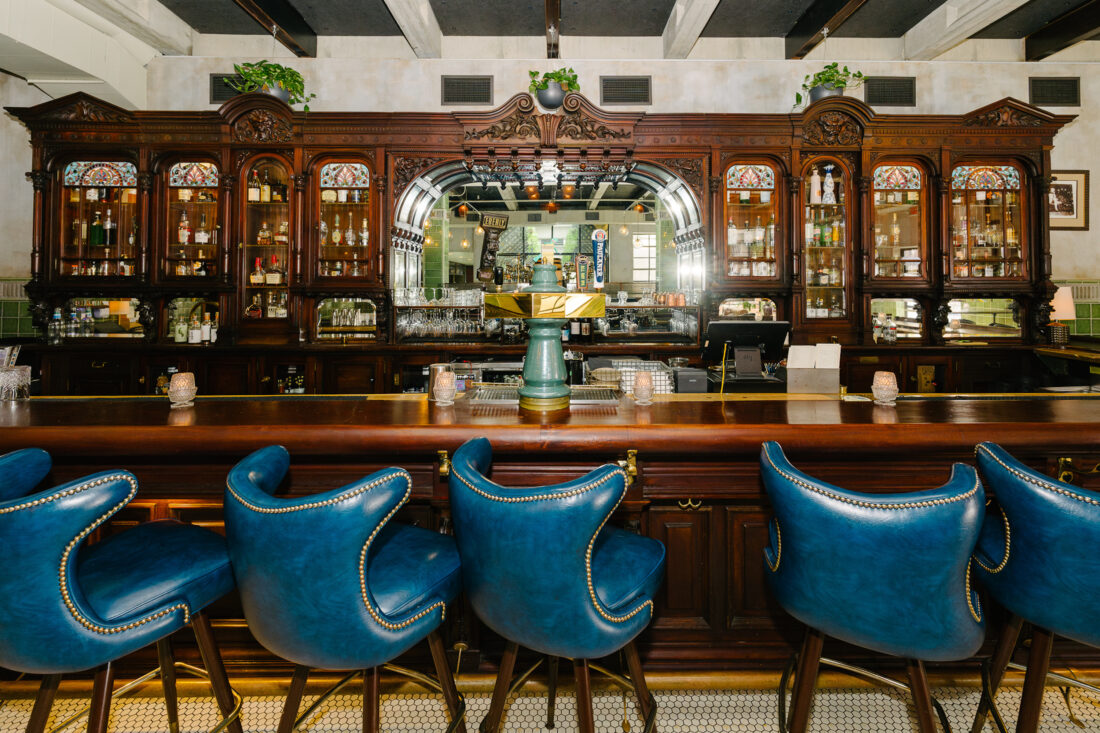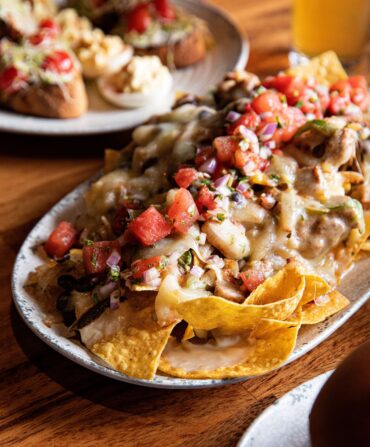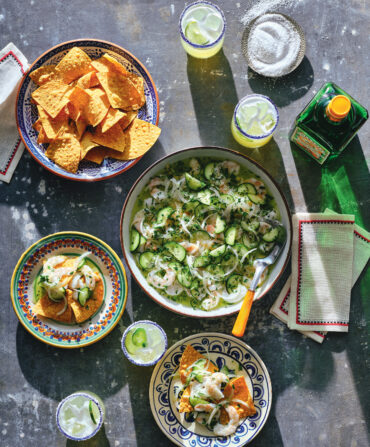Over the second half of the twentieth century, a nondescript little dive bar in New York called the Cedar Tavern played host to a roster of artists, starving and otherwise—abstract expressionists like Jackson Pollock, Willem and Elaine de Kooning, Franz Kline, Andy Warhol; writers like Jack Kerouac, Frank O’Hara, and Allen Ginsberg; and musicians like Bob Dylan and Jimi Hendrix. The original dive location is long gone, but the bar itself—a long, ornate slab of South American mahogany—still serves thirsty patrons, only now it resides in Austin, Texas. And Tommy Maitland, operations manager at the Eberly restaurant and bar, has a story to tell about how he and the owners got it there.
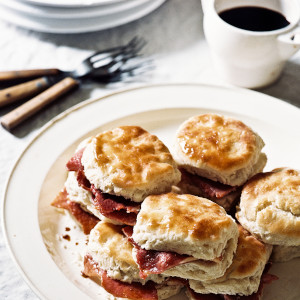
“It’s the most famous bar in America,” he says of the Cedar Tavern. “It was a think tank for Beat writers, painters, folk singers.” Maitland himself, a New York native, used to frequent it with his two best friends, Eddie Patterson and John Scott, who would go on to found Austin barbecue joint and music venue Stubb’s. When Maitland, still in New York, heard the news that the Cedar Tavern was shuttering forever in 2006 after nearly 140 years in operation, he called his buddies with the news and a recommendation: “You’ve got to email the owner and try and buy this bar.”
At first, they got a polite rejection; owner Michael Diliberto already had a buyer. But when word got out that Diliberto had backed out—he didn’t like what the new owner planned to do with it—the trio sent another email, and another, explaining their connection to the bar and their plans for its future. No answer, for nearly a year. Then came an email out of nowhere: “Come get the bar. It’s yours.”
Up in New York, the friends met with Diliberto to arrange the bar’s transport—and ask him why he had suddenly changed his mind. Diliberto’s answer: “I was fielding offers from celebrities, billionaires, Saudi royals, hedge fund directors. Everyone wanted this bar, and they were willing to pay a lot more for it than you. But you are the only group of people that wanted to keep it public.”
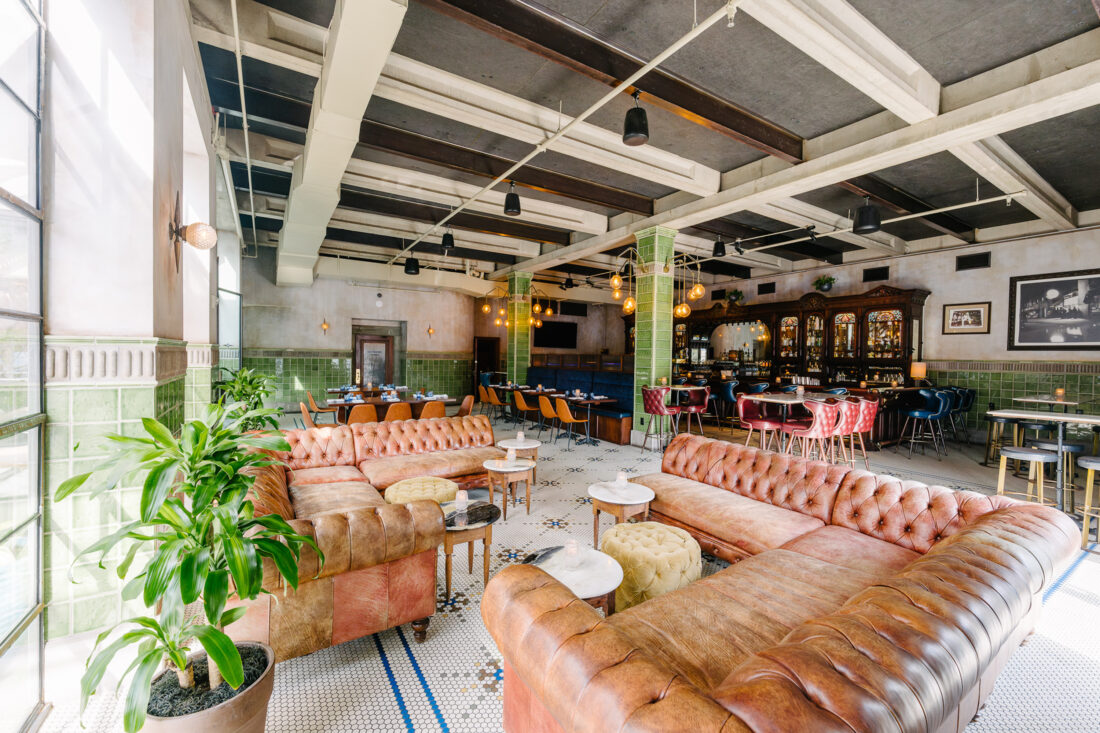
The rest is history. The bar arrived in Austin “in about a million pieces,” and it sat in storage during the conception of Eberly, which would be a restaurant in a former print shop and warehouse in Austin’s South Lamar neighborhood. A master carpenter spent nearly a year restoring the bar, and it debuted with Eberly’s 2016 opening.
Today, the thirty-foot-long, ten-foot-tall bar serves as the crowning glory of the restaurant. Austinites and visitors alike come and have a drink (like the concrete jungle cocktail, below), propping their elbows up just as Hendrix, Pollock, and others did. “If you talk to the bartenders, they might tell you a story about this crazy piece of American history,” Maitland says. “Like the owner said to us, this is a bar for the people.”
